<Back to Index>
- Mathematician Gerhard Frey, 1944
- Mathematician Jean - Pierre Serre, 1926
- Mathematician Kenneth Alan "Ken" Ribet, 1948
PAGE SPONSOR
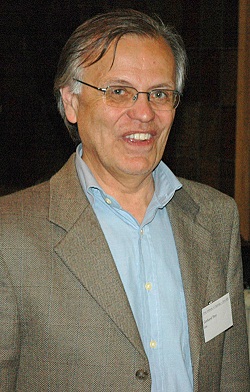
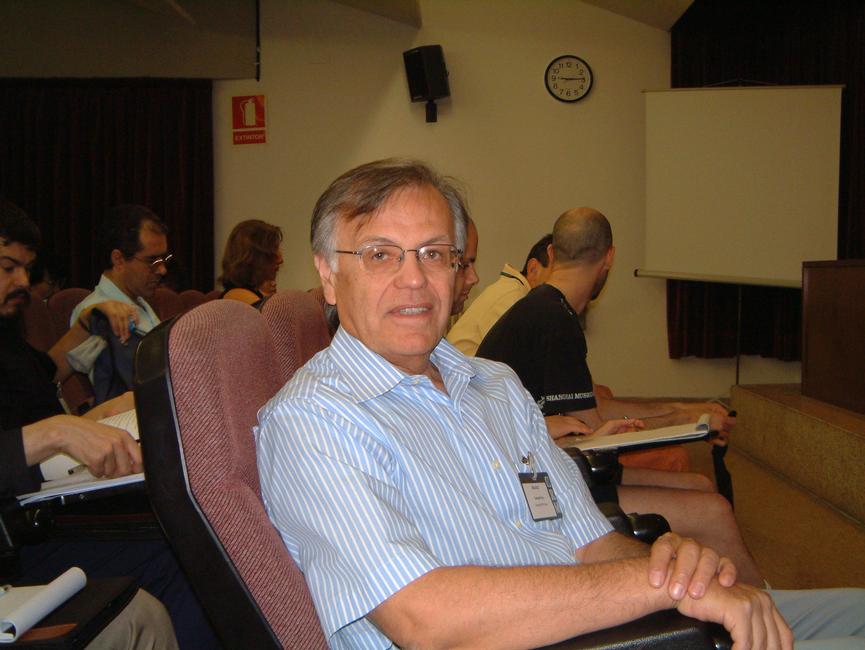
Gerhard Frey (born 1944) is a German mathematician, known for his work in number theory. His Frey curve, a construction of an elliptic curve from a purported solution to the Fermat equation, was central to Wiles' proof of Fermat's Last Theorem.
He studied mathematics and physics at the University of Tübingen, graduating in 1967. He continued his postgraduate studies in Heidelberg where he received the Ph.D. degree in 1970 and his "Habilitation" in 1973. He was assistant professor at the University of Heidelberg from 1969 - 1973, professor at the University of Erlangen (1973 - 1975) and at the University of Saarbrücken (1975 - 1990) and until 2009 held a chair for number theory at the Institute for Experimental Mathematics at the University of Duisburg - Essen, campus Essen.
His research areas are number theory and arithmetical geometry as well as applications to coding theory and cryptography. He was a visiting scientist at several universities and research institutions, including The Ohio State University, Harvard University, University of California at Berkeley, the Mathematical Sciences Research Institute (MSRI), the Institute for Advanced Studies at the Hebrew University of Jerusalem, and IMPA in Rio de Janeiro.
In 1985 Frey pointed out a connection between Fermat's last theorem and the Taniyama conjecture, and this connection was made precise shortly thereafter by Kenneth Ribet, who proved that the Taniyama conjecture implies Fermat's last theorem. This approach provided a framework for the subsequent successful attack on Fermat's last theorem by Andrew Wiles in 1990s.
Frey was co-editor of the Manuscripta Mathematica. He was awarded the Gauss medal of the Braunschweigische Wissenschaftliche Gesellschaft in 1996 for his work on Fermat's Last Theorem. Since 1998 he has been a member of the Göttingen Academy of Sciences.
In 1998, Frey proposed the idea of Weil Descent Attack for elliptic curves over finite fields with composite degree. As a result of this attack, cryptographers lost their interest in these curves.
In 2006 Frey received the Certicom ECC Visionary Award for his contributions to Elliptic Curve Cryptography.
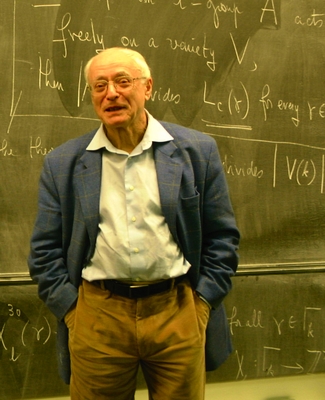
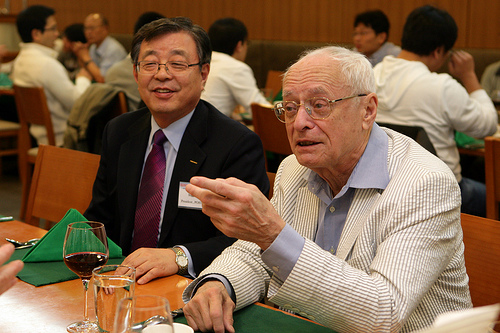
Jean - Pierre Serre (born 15 September 1926) is a French mathematician. He has made contributions in the fields of algebraic geometry, number theory, and topology.
Born in Bages, Pyrénées - Orientales, France, to pharmicist parents, Serre was educated at the Lycée de Nîmes and then from 1945 to 1948 at the École Normale Supérieure in Paris. He was awarded his doctorate from the Sorbonne in 1951. From 1948 to 1954 he held positions at the Centre National de la Recherche Scientifique in Paris. In 1956 he was elected professor at the Collège de France, a position he held until his retirement in 1994.
From a very young age he was an outstanding figure in the school of Henri Cartan, working on algebraic topology, several complex variables and then commutative algebra and algebraic geometry, in the context of sheaf theory and homological algebra techniques. Serre's thesis concerned the Leray – Serre spectral sequence associated to a fibration. Together with Cartan, Serre established the technique of using Eilenberg – MacLane spaces for computing homotopy groups of spheres, which at that time was considered as the major problem in topology.
In his speech at the Fields Medal award ceremony in 1954, Hermann Weyl praised
Serre in seemingly extravagant terms, and also made the point that the
award was for the first time awarded to an algebraist. Serre
subsequently changed his research focus. However, Weyl's perception that
the central place of classical analysis had been challenged by abstract algebra has subsequently been justified, as has his assessment of Serre's place in this change.
In the 1950s and 1960s, a fruitful collaboration between Serre and the two years younger Alexander Grothendieck led to important foundational work, much of it motivated by the Weil conjectures. Two major foundational papers by Serre were Faisceaux Algébriques Cohérents (FAC), on coherent cohomology, and Géometrie Algébrique et Géométrie Analytique (GAGA).
Even at an early stage in his work Serre had perceived a need to construct more general and refined cohomology theories to tackle the Weil conjectures. The problem was that the cohomology of a coherent sheaf over a finite field could not capture as much topology as singular cohomology with integer coefficients. Amongst Serre's early candidate theories of 1954 – 55 was one based on Witt vector coefficients.
Around
1958 Serre suggested that isotrivial principal bundles on algebraic
varieties — those that become trivial after pullback by a finite étale map — are important. This acted as one important source of inspiration for Grothendieck to develop étale topology and the corresponding theory of étale cohomology. These tools, developed in full by Grothendieck and collaborators in Séminaire de géométrie algébrique (SGA) 4 and SGA 5, provided the tools for the eventual proof of the Weil conjectures.
From 1959 onward Serre's interests turned towards group theory, number theory, in particular Galois representations and modular forms.
Amongst his most original contributions were: his "Conjecture II" (still open) on Galois cohomology; his use of group actions on Trees (with H. Bass); the Borel - Serre compactification; results on the number of points of curves over finite fields; Galois representations in ℓ-adic cohomology and the proof that these representations have often a "large" image; the concept of p-adic modular form; and the Serre conjecture (now a theorem) on mod-p representations that made Fermat's last theorem a connected part of mainstream arithmetic geometry.
In his paper FAC, Serre asked whether a finitely generated projective module over a polynomial ring is free. This question led to a great deal of activity in commutative algebra, and was finally answered in the affirmative by Daniel Quillen and Andrei Suslin independently in 1976. This result is now known as the Quillen - Suslin theorem.
Serre, at twenty - seven in 1954, is the youngest ever to be awarded the Fields Medal. In 1985, he went on to win the Balzan Prize, the Steele Prize in 1995, the Wolf Prize in Mathematics in 2000, and was the first recipient of the Abel Prize in 2003.
He
is a foreign member of several scientific Academies (France, US,
Norway, Sweden, Russia, ...) and has received about a dozen honorary degrees (Cambridge, Oxford, Harvard, ...).
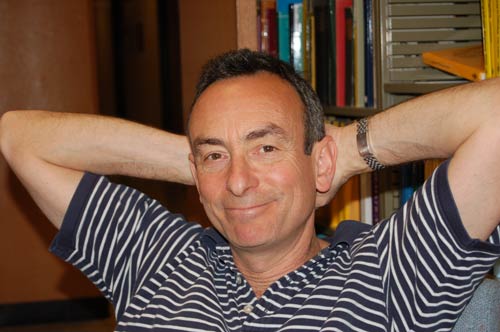
Kenneth Alan "Ken" Ribet (born June 28, 1948) is an American mathematician, currently a professor of mathematics at the University of California, Berkeley. His mathematical interests include algebraic number theory and algebraic geometry.
He is credited with paving the way towards Andrew Wiles's proof of Fermat's last theorem. Ribet proved that the epsilon conjecture formulated by Jean - Pierre Serre was indeed true, and thereby proved that Fermat's Last Theorem would follow from the Taniyama - Shimura conjecture. Crucially it also followed that the full conjecture was not needed, but a special case, that of semistable elliptic curves, sufficed. An earlier theorem of Ribet's, the Herbrand – Ribet theorem, the converse to Herbrand's theorem on the divisibility properties of Bernoulli numbers, is also related to Fermat's Last Theorem.
As a student at Far Rockaway High School, he was on a competitive mathematics team, but his first field of study was chemistry. He earned his bachelor's degree and master's degree from Brown University in 1969, and his Ph.D. from Harvard University in 1973. In 1998, he received an honorary doctorate from Brown University. He was elected to the American Academy of Arts and Sciences in 1997 and the National Academy of Sciences in 2000.
He received the Fermat Prize in 1989.